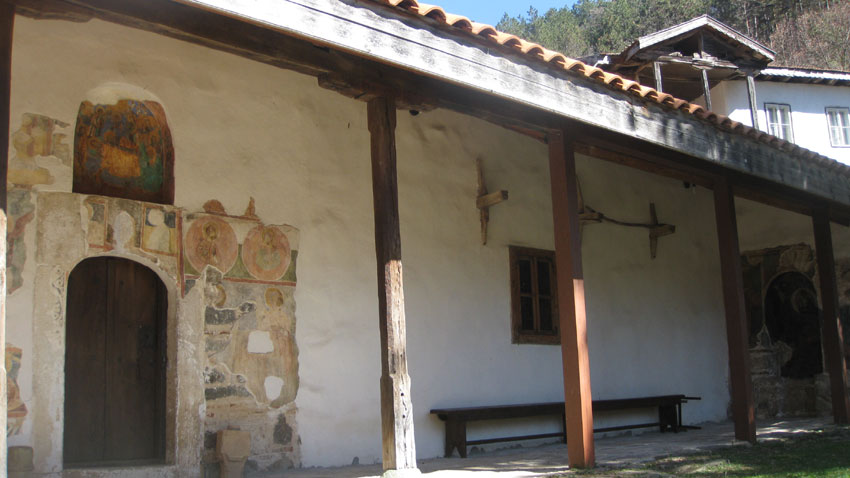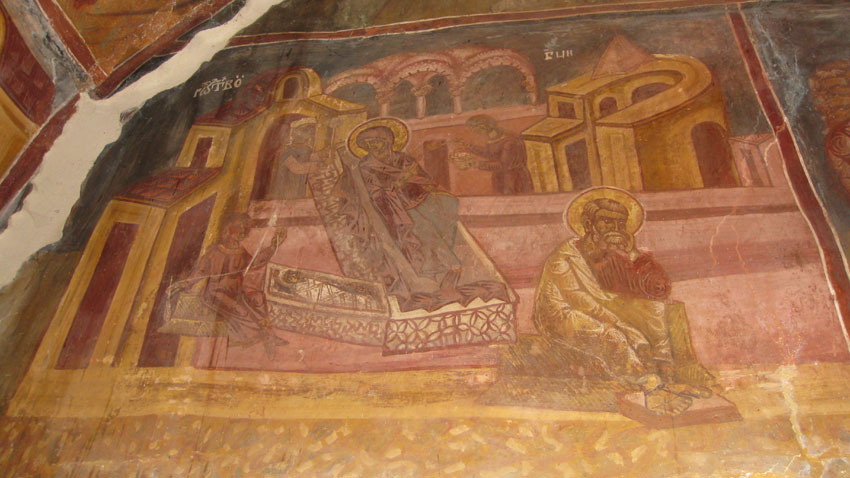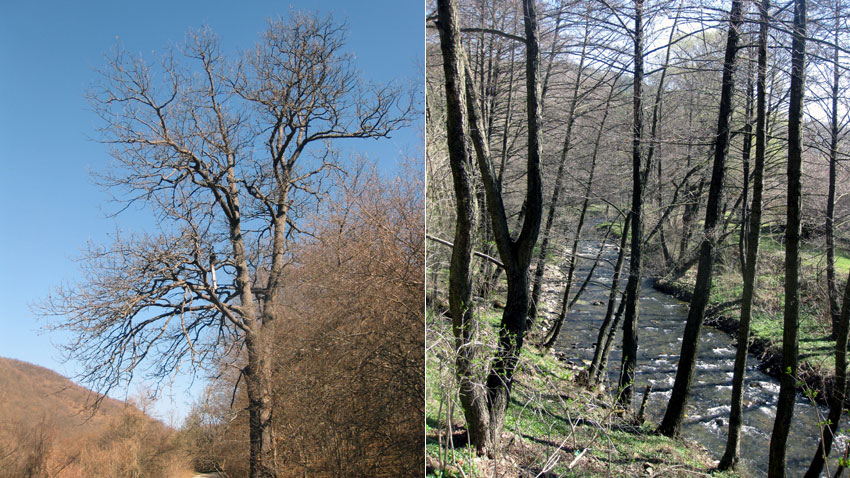There are so many places around Sofia offering enjoyable strolls to well-trained or weekend hikers. There is one hiking route in the region of Eleshnitsa village that is particularly suited for hikers of the second variety.
An intercity bus will take you to the village of Zhelyava, the start of a romantic trail leading to Eleshnitsa with its breathtaking view of Eleshnitsa viaduct cutting across the green meadows all around.

Close to the village, tucked away in the folds of the Balkan range by the river Yakovishtitsa, also called Manastirska (Monastery), lies The Assumption of the Holy Mother of God monastery. Along their way, tourists can stop for a picnic in one of the numerous scenic spots and enjoy the view, or take a dip in the cool waters of the river. One thing that makes an impression on visitors is that the locals have never changed their idea of history, whatever the political times. There is a memorial dedicated to “all those who lost their lives for Bulgaria in different times, but who faced death courageously so the country may prosper”. And surprisingly - opposite it, just a few meters away, amidst the trees romantically overgrown with ivy, rises a monument to communist partisan Yordanka Nikolova who was shot dead here in 1944. In the times of totalitarianism the village bore her name – it was called Yordankino. Further down, there is a monument to fighters in the 1876 April uprising, killed by the Ottomans.

A sign in front of the scenic Eleshnitsa monastery reads that it was founded in the 13th – 14th century as a convent. The locals say that to begin with, it was first located some two kilometers from where it now rises. Built on donations by believers from far and wide, it was a spiritual and literary hub with a monastery school in the latter half of the 19th century. The church was restored in the period from 1997 until 2005.
Ass. Prof. Valentina Sharlanova, Doctor of Ethnology at the Institute of Ethnology and Folklore Studies with Ethnographic Museum at the Bulgarian Academy of Sciences has been studying this monastery which was part of what is known as the Sofia Minor Mount Athos. According to Ass. Prof. Sharlanova, there are three different fresco layers in the church, the oldest one in the nave which has partially come down to us, dates back to the end of the 16th and the beginning of the 17th century when the monastery was restored. She adds that images of the healer saints Cosmas and Damian, St. Simeon Stylites, Saints Constantine and Helena, St.

Orestes and St. Mardarius have been preserved inside medallions from the oldest fresco layer. Prof. Sharlanova says the church frescoes may well be the work of Pimen Zograph who worked on other churches in the area. When the frescoes were taken down from the eastern narthex wall for storage, a large doomsday composition was revealed in vivid colours. In this work experts recognize the style of Revival-time artist Nikola Obrazopisov of the Samokov icon painting school.
The route leading up to Murgash peak (1,687 m.) starts behind the monastery building. It is part of the Kom-Emine long-distance trail. There is a legend about the name of the peak that may help hikers decide whether to continue on their way up or turn back.
“According to local legend, the village of Yakoushtitsa, now Eleshnitsa, somewhere around the time the Bulgarian lands were conquered by the Ottoman invaders, there lived a girl of outstanding beauty called Zlatka. Men would come from near and far to ask for her hand in marriage. But she found them all unworthy and gave them a difficult task to perform – saying that she would marry the one who carries her across the mountain on his back. Most of the young men gave up along the way – they fell down out of sheer exhaustion and never reached their goal. One day a young man called Murgash came to the village. He was head over heels in love with the girl, so he started out on his way, carrying her on his back and feeling no fatigue whatsoever. But when he reached the last and steepest hill, towering over a vast meadow, his heart gave out and he fell down dead. The locals buried the young man on the peak and called it after him. And the meadow where the young man lost his life was initially named Zlatina meadow (from the name Zlatka) but later came to be known as Zla (Evil) meadow.”

English version: Milena Daynova
Photos: Miglena IvanovaAn exhibition showcasing iconic cultural and natural tourist sites from Bulgaria has been opened in front of the Bulgarian Embassy in Stockholm. "Bulgaria is a country with an impressive history, rich cultural and historical heritage and..
The winter resort of Pamporovo in the Rhodope Mountain is crowded. We are experiencing a strong season and an increase in tourists from Romania, Greece and Serbia. This was told to BTA by Dimitar Gerdzhikov from Pamporovo AD. Gerdzhikov added..
Eight thousand years ago, one of the most mysterious cultures in the Balkans emerged in the area of the present-day village of Dolnoslav. In the area of Asenovgrad , between the plain and the mountains, archaeologists uncover settlement mounds..

+359 2 9336 661
